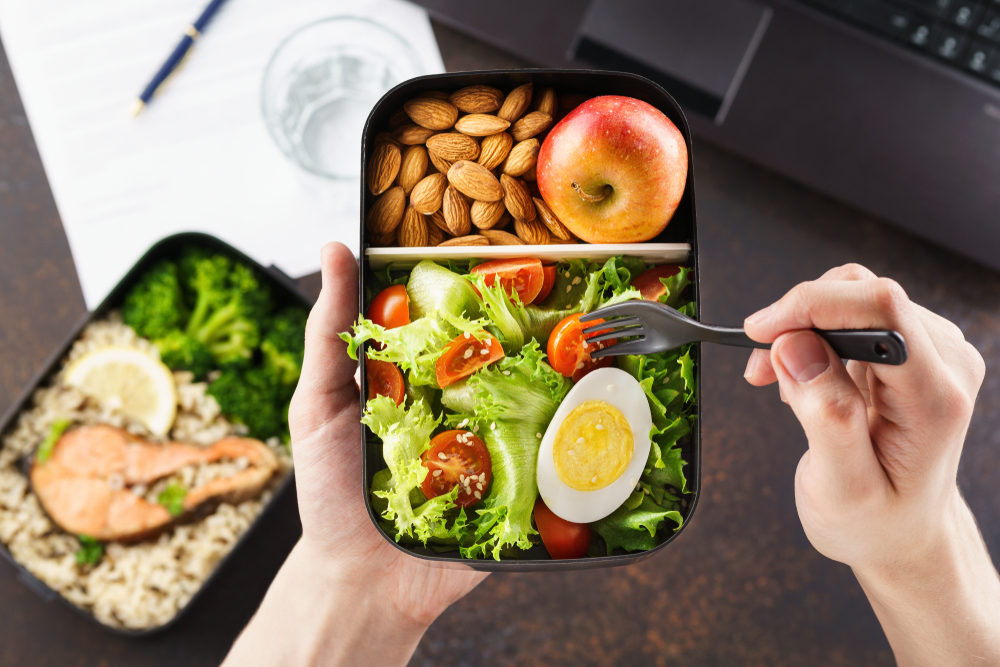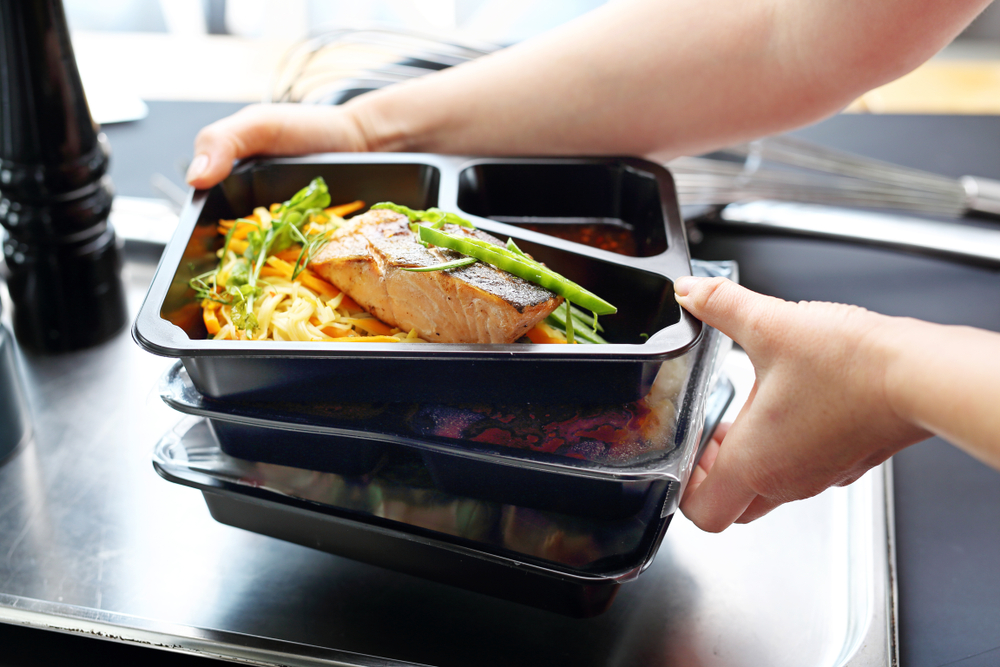SUMMARY
There are certain similarities between Keto, Low-Carb and Atkins diets. But these eating plans differ in terms of fat intake and proven ability to support weight loss.
Table of Contents
Keto vs. Atkins vs. Low-Carb
Which diet is better?
Which diet is right for you?
What is a low-carb diet?
What is the keto diet?
What is the Atkins diet?
Getting Started: Beginner Tips
You’ve probably heard of Keto, Atkins, and Low-Carb — three powerhouse diets that promise weight loss by focusing on lowering carbs.
While all three do involve carb counts, there are some major differences that are important to note.
So, let’s break down the three diets, describing their similarities and differences so you can determine which one might be the best fit and go into that diet feeling eager and prepared.
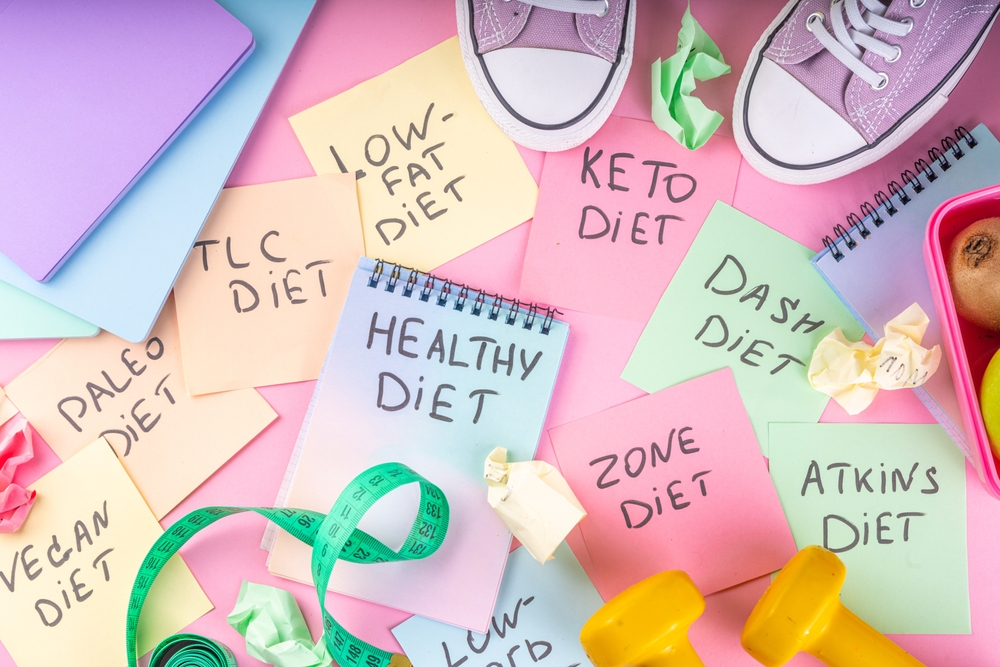
Keto vs. Atkins vs. Low-Carb
- Keto diet: Adapts your body to use fat as its primary source of fuel.
- Atkins diet: Focuses on cutting and systemically increasing of carbs for sustained weight loss.
- Low-Carb diet: Limits carbs to 20-60 grams per day with the intention of weight-loss.
Similarities: Keto vs. Atkins vs. Low-Carb
- Limit carbs
- Limit sugar
- Prioritize green vegetables over starchy ones
- Limit packaged foods
- Bulk up on fats and protein over carbs
- Weight loss benefits
All three diets (ketogenic, Atkins, low-carb) limit carbs and sugar and focus on eating more green veggies over starchy ones, limiting packaged food items, and bulking up on fats and protein over carbs.
There is also a restrictive aspect to all three and all three will have weight loss and heart benefits.
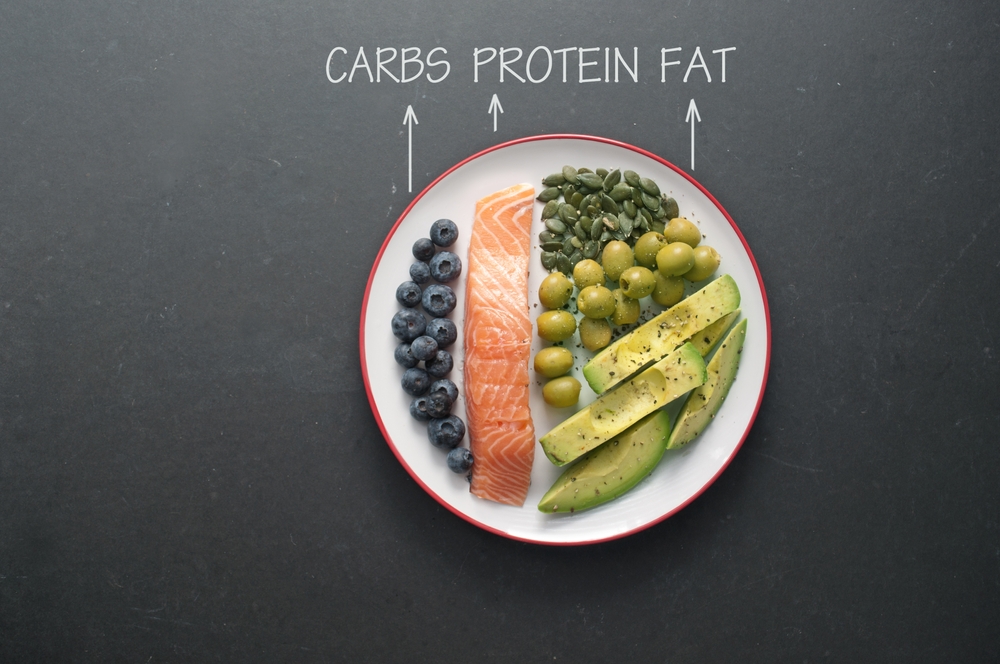
Differences: Keto vs. Atkins vs. Low-Carb
Keto, Atkins, and low-carb diets differ in macronutrient requirements and focus:
- Keto focuses on increasing fat intake to about 80% of daily intake and emphasizes on keeping the body in “ketosis”.
- Atkins focuses on increasing fat and protein over carbs, but does not have fat intake being so high.
- Low-carb is more subjective in nature, having loose guidelines around other aspects of eating other than keeping a low range of carbs.
Which diet is better?
“The worst to me as a registered dietitian is anything that takes away dietary options so phase 1 of Atkins and then the ketogenic diet because these cut out a lot of healthy foods,” says Hultin.
Low-carb is more flexible. “Eating some grains and more fruits and veggies (per a ‘low carb’ diet) can provide a lot more fiber, vitamins, minerals and antioxidants,” Hultin says.
Yet, you might love the structure of phases two and three, which allow for more wiggle room in carbs, on Atkins, and you might like the increase in protein and fats over carbs in general too. So, once past that phase one with major restrictions, you might thrive.
“It is always best to discuss major diet changes with your doctor as many people looking to move toward keto, Atkins or low carb have specific reasons for doing so. Your doctor can help you decide which diet changes might be best for your individual metabolism, remember there is no one perfect diet for all of us,” says Evans.
Which diet is right for you?
Atkins, keto, and low-carb diets help manage blood sugar and heart health and aid in weight loss, so anyone looking for help in those areas might benefit from either of the three.
Atkins and low-carb diets are more flexible than keto, for sure, so that’s something to consider based on your schedule and how you operate when dieting. If you are someone who needs to have more control themselves, then go for these two, especially low-carb with the most wiggle room.
1. Choose Atkins for moderation and long-term results
- The Atkins diet is great for anyone who wants to take a moderate approach to carb restriction and who is looking for a long-term solution, based on maintenance phase.
- It is also a great option for diabetes management. People on diuretics, insulin, or oral diabetes drugs should not follow Atkins without their doctor’s approval.
Still though, “for Atkins, ketogenic and low carb… remember the whole foods theme is the goal, so if you transition to whole foods first you will be in a better position to move toward the specific diet of your choice by adjusting intake of healthy fats and protein as all three are lower carb,” says Randall Evans, RDN.
And anyone who can safely practice keto but finds it difficult to stick to strict eating schedules would be better off following moderate low-carb diets or even Atkins, says Tiffany Yamut, RN.
2. Choose low-carb for safety and flexibility
- For safety, low-carb is the safest, as it is the more lenient.
- Then keto and Atkins due to their greater restrictions.
Still though, if you work with a medical profession to monitor progress and safety you should be okay.
3. Choose keto for effectiveness
- As for effectiveness, keto might be most effective since it is the most rigid, and backed by research for it’s proven ability to support weight-loss.
- The challenge of course, is that if offers less flexibility than Atkins or general low-carb which makes it much harder to stick to.
So, it depends on the individual. Low-carb might be more effective if you are able to sustain it long term due to the flexibility.
Who should avoid these diets?
And as for who should avoid them, people who need to avoid low-carb diets include those with fat-metabolism disorders, liver failure, pancreatitis, porphyria, and kidney stones, says Sofia Norton, RD.
“Pregnant and lactating women may also want to avoid very-low-carb diets because these are not studied enough in regards to pregnancy and lactation and because there have been reports of ketoacidosis in this group,” she adds.
What is a low-carb diet?
A low carb diet is one that is simply low in carbohydrates.
For most people today being low carb means limiting sugars, some starchy foods and processed foods which are so quickly broken down they act like sugars.
“Clinically we consider lower carb diets for people trying to control weight, hormone balance and insulin issues,” says Randall Evans, RDN.
Low carb is subjective though. “The Acceptable Macronutrient Distribution Range (AMDR) for carbs is 45-65% of all daily calories and so conceivably it would be anything that’s under that amount,” says Ginger Hultin, RD, and Spokesperson for the Academy of Nutrition and Dietetics.
How It Works
- When you reduce carb intake, your blood glucose levels drop, glycogen stores start to deplete, and the body makes less insulin.
- Fat and protein (which you eat more of on low-carb diets) are also said to increase satiety, which helps with weight loss and glycemic control.
Benefits of Low-Carb Diet
• Going low-carb and eating more protein, good fats, and non-starchy veggies helps to keep fiber in the diet along with all the other benefits, including vitamins, minerals and phytonutrients.
• It helps to control insulin and blood sugar issues, which can help with reducing inflammation, managing blood sugar, controlling weight, and keeping hormone balance in check.
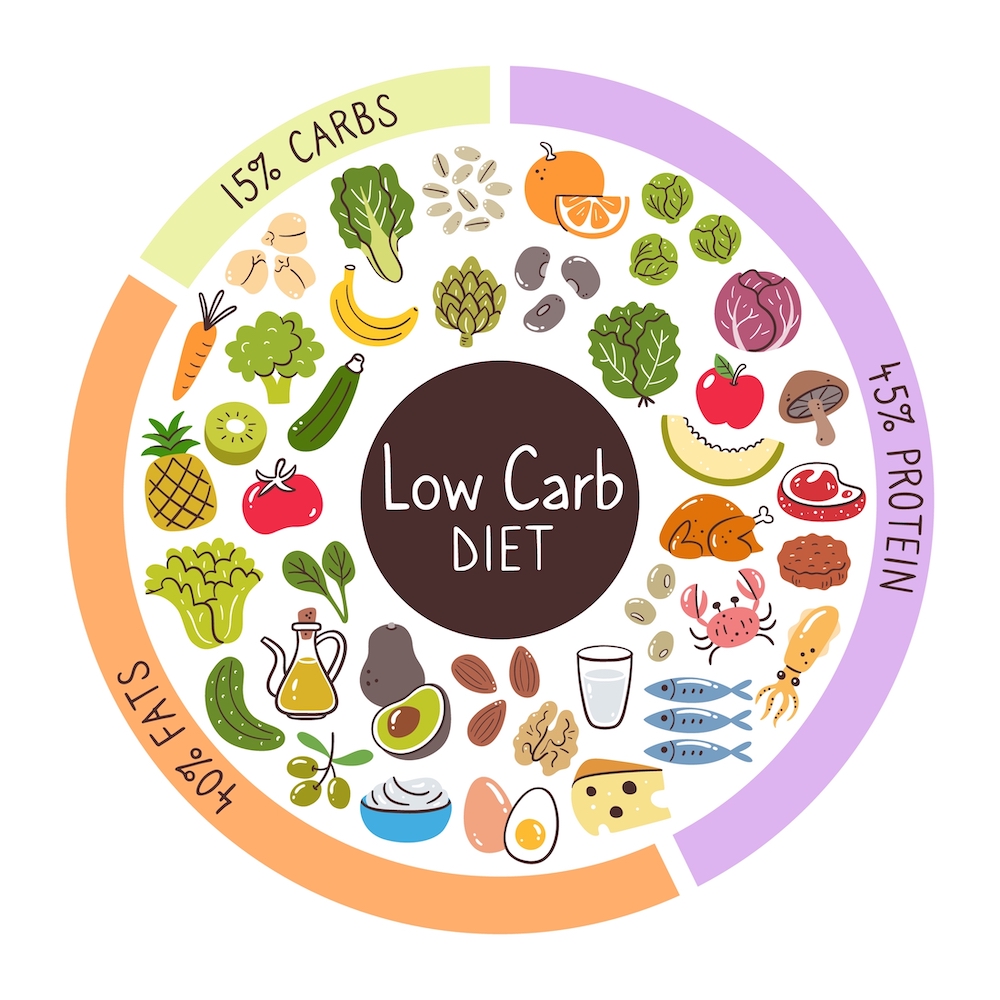
“Not everyone agrees that low-carb diets have any advantage over other diets but proponents that do believe in their efficiency claim that low-carb diets work mainly through their effects on blood sugar, appetite, and insulin,” says Sofia Norton, RD.
It can also help with managing diabetes and lowering blood pressure. So it could be a good option for those with heart conditions where a low-carb and low-sugar diet is beneficial but they don’t necessarily need to go keto to lose weight or Atkins for that specific structure. Think of it as easing into a low-carb regimen.
Who It’s Best For
People who are overweight can find these diets useful. Low-carb diets can reduce appetite and it’s hard to overeat on them.
“And people with type-2 diabetes can improve their insulin sensitivity and glycemic control with these diets, but they do need to adjust their medications when making dietary changes,” Norton says.
Still, if anyone is considering starting a low carb diet, they should be working with a registered dietitian for guidance in meeting their needs and also their physician for guidance on how to do it safely.
In general, move towards a real whole foods diet limiting intake of packaged processed foods, allowing your body to adjust to real foods, as this can improve digestion and boost the microflora of the GI tract. Then you should feel more digestive comfort and feel lighter and trimmer.
Risks and Drawbacks
Some people over-restrict or do not add enough fat or protein to compensate for the restriction in carbs, and since low-carb does not have such a strong micronutrient breakdown and requirement as keto does or the same rigidity of Atkins, it may make it easier to not get enough and become deficient.
Some will also limit healthy carbs while continuing to use low calorie carb foods, i.e. packaged processed food/junk. And that’s bad for your heart health, can lead to cravings, and just won’t fill you up or fuel your body with the nutrients it needs.
What is the keto diet?
On the keto diet you are eating the same foods as you are on a low-carb diet, like animal meat, fish, nuts, seeds, green veggies, and non-starchy veggies or fruit in super moderate doses, but you are working within a great macronutrient ratio.
So you would bulk up fat intake to 80 percent of the daily calories, lower carbs count to under 25 net grams a day, and keep protein in the middle at around 10-15 percent. Basically, there’s more structure and it emphasizes fat, as opposed to just saying, “Let’s go low carb.”
How It Works
- A ketogenic diet makes fat a primary fuel for the body.
- When fat is a primary fuel source the liver will make some of our fat into ketones.
- Ketones allow us to use fat to burn fat, so we can lose weight and have more energy, rather than use glucose (from carbs and sugar) for fuel.
- When the body adapts to using fat as its main source of energy, this metabolic state is called “ketosis”.
- Keeping net carbs under 25g per day is essential to staying in ketosis and losing weight.
Learn more about how the keto diet works here.
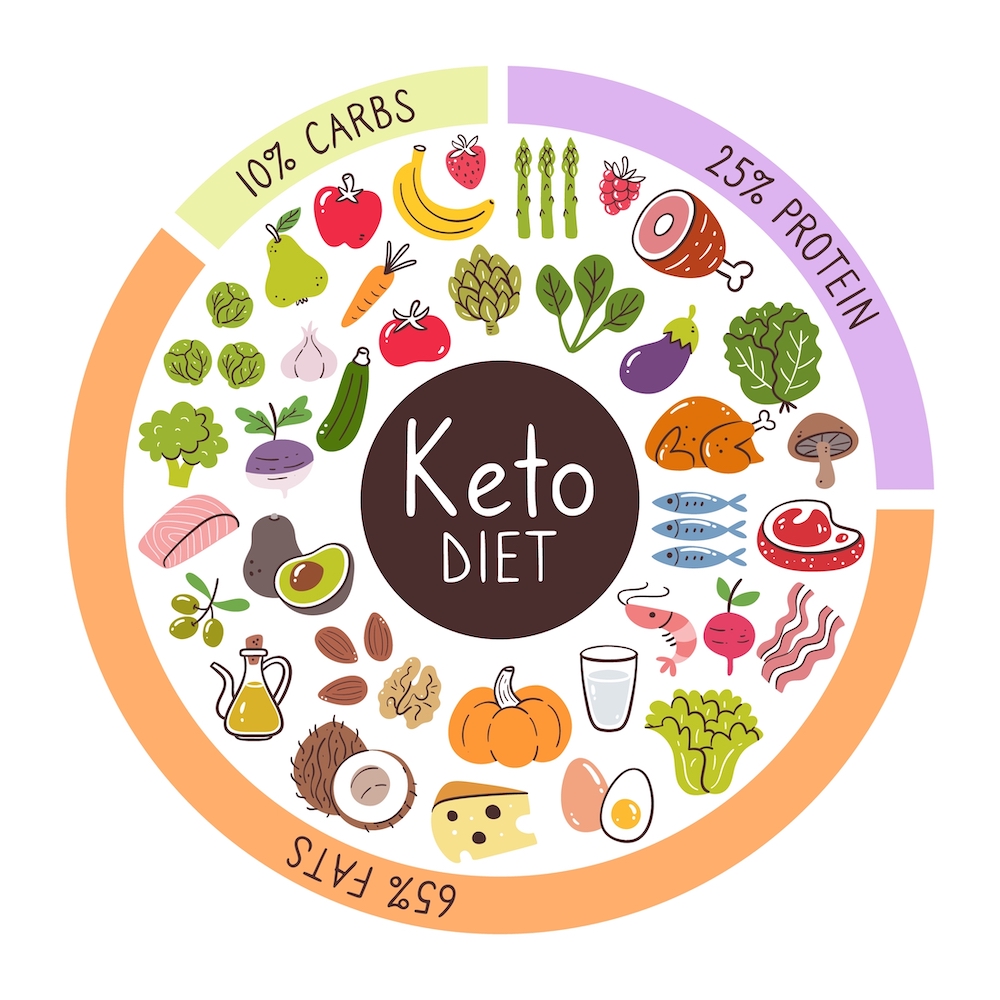
Benefits of Keto
People might go keto to lose weight, especially in the belly region, to monitor blood sugar levels and hormonal conditions, like PCOS in women, and even to manage epilepsy (that was the original reason to go keto, but this is of course a bit outdated).
Now people are going keto for weight loss, greater energy and metabolic benefits!
Currently, the ketogenic diet has become one of the most popular diets for weight loss and similar to the healthy version of low carb the primary benefits are from control of insulin, blood sugar, inflammation, and hormone balance.
Another noteworthy benefit of keto is the metabolic changes it causes. “Some studies show it can improve insulin sensitivity in people with diabetes. It can also help enhance metabolic flexibility, which in itself improves metabolic health,” says Tiffany Yamut, RN.
In layman’s terms, this means your body can easily adapt between using either carbs or fats as its energy source. To put it in perspective, “metabolic inflexibility” is often linked to obesity and type 2 diabetes.
“Ketogenic diets are proven to be helpful in reducing seizure frequency in epilepsy and they may have many other benefits like cancer prevention, improved brain functioning, and better exercise performance,” Yamut says.
Risks & Drawbacks
If you go into a ketogenic diet, increasing fat dramatically and slashing carbs, when you’ve been eating differently your whole life, it might be too much on the body. So, speak to a physician first and ease in slowly to get your body acclimated to the new types of foods and ratios.
Plus it is more restrictive and requires macronutrient tracking, ketone level testing, and the transition of the keto flu, which happens in the first one or two weeks as the body gets used to keto. (You might feel nausea, fatigue, thirst, cravings, headaches, and more.)
Learn more about keto side-effects here.
Yet, any very-restricted diet can cause something called the “keto flu” and this could happen with low carb and with Atkins, too, if carbs are restricted low enough.
The tip for getting started on any diet where you’re cutting carbs is staying hydrated, resting your body and probably taking a break from really hard workouts until your body adjusts. It’s important that you’re meeting your protein and calorie needs for energy during this time as well.
Keep in mind that once you stop the diet, weight regain (often rapid) is common.
Another drawback is the lack of peer-reviewed clinical trials that could prove the diet’s safety in the long run. So more research is needed.
Read more about the long-term safety of keto here.
What is the Atkins diet?
The Atkins diet is a low-carb diet developed by Dr. Robert Atkins in the 1970s. There are different versions of the Atkins diet that have developed since its original inception.
How It Works
It’s mainly designed to be a weight-loss diet and it is divided into 4 phases:
- Induction: Carbs are limited to around 20g daily, while protein and fat are increased.
- Balancing: Carbs are gradually increased and balanced in case weight-loss stops.
- Pre-maintenance: Carb intake is gradually increased until it reaches a moderate threshold.
- Maintenance: Lifetime maintenance involves keeping carbs moderate in order to sustain a normal body weight.
Differences
Atkins is different from keto in that it does not lead to long-term ketosis. Ketosis can happen in the first phase of Atkins since carbs are kept so low, but ketosis stops once you go into the other 3 phases of Atkins.
Atkins also does not restrict protein. What makes Atkins different from other low-carb diets is its structure and gradual increase in carbs over time.
Most people consider Atkins similar to a ketogenic diet but typically Atkins does not target specific macro levels like keto does.
Traditional Akins diets can contain a lot of protein and this would largely be the difference between Akins and keto, as high intake of protein would limit ketosis.
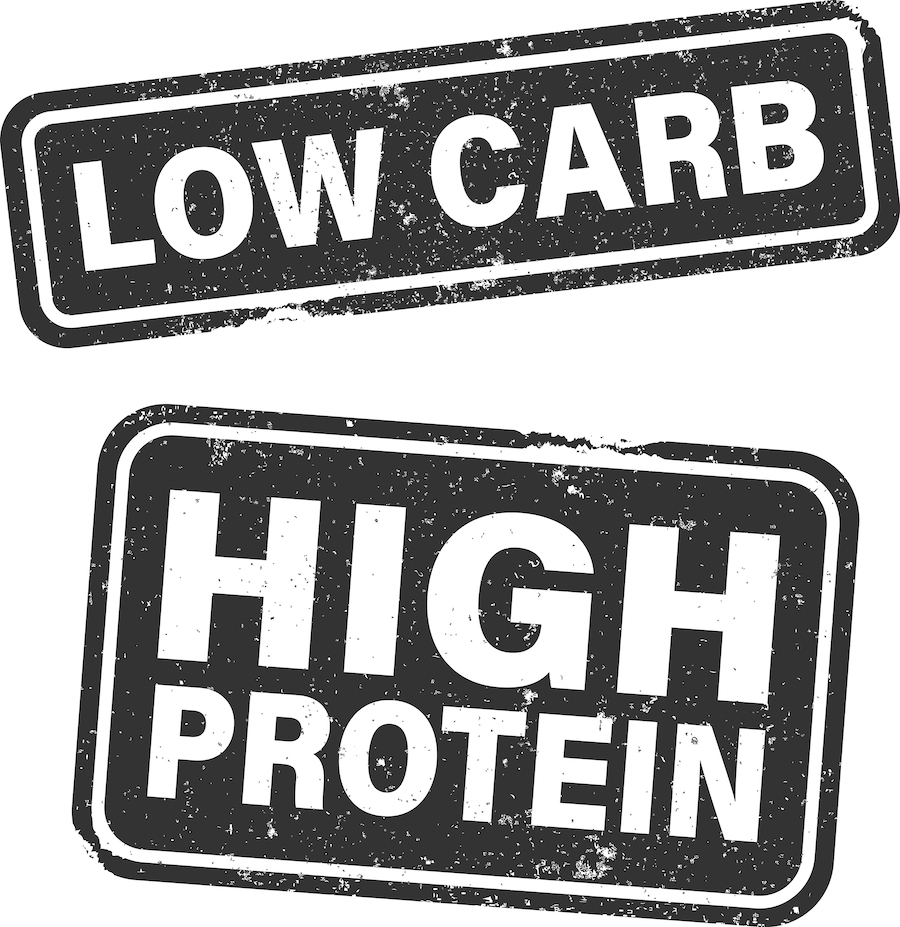
So Atkins focuses more on protein, over fats, and still reduces carbs. Keto carb calories are traded for more healthy fats while protein stays normal and for Atkins you can increase intake of both protein and fat.
Plus there is more structure in terms of phases on the diet. Atkins will liberalize over time in different phases but keto is designed to keep people in the metabolic state of “ketosis” over time, too.
In the ongoing weight loss plan for Atkins, you increase your carbs by 5 grams per week, starting with 25 then 30, and more. The idea here is that you find out how many carbs you are able to eat and still maintain weight loss. This is an interesting part of this diet plan because in fact, everybody is different and so this can help people find out what works best for their individual body.
Benefits of Atkins
The main benefit of the Atkins diet is weight-loss. The diet was designed for people struggling with excess weight and it was designed by a doctor.
Since it is low-carb and has some good structure in phases, you get more of a set plan which makes it much easier to stick to than the loose guidelines of a general low-carb diet. You also don’t need to restrict so heavily always (not after phase 1) and increase fats to such an extent as you would on keto.
Plus, there are different packaged snacks and meals, so if you are one who likes to plan around that, it could be helpful to know what you are eating each day and to have great meal prep.
It will also help boost cardiovascular health and metabolic syndrome by lowering inflammation in the body, keeping blood sugar levels balanced, and helping to reduce sugar and carb cravings overall. Why? Because it is still low-carb, like the other two diets.
Risks & Drawbacks
The main drawback is that it’s still not recognized in the medical community and there are not enough studies proving its efficiency compared to other weight-loss approaches.
A major one is that stage 1 is super, super restrictive, so you might become malnourished if you are not eating well enough or working with a dietitian. And such restriction can make you feel burned out too early where you will give it up altogether or end up on a binge outside of the diet.
You also need to buy many resources, such as the foods, snacks, books, and more materials to follow the diet, and so it might not be the best option if you are budget conscious, since it will cost more to do than the others.
Getting Started: Beginner Tips
Ketogenic diet
Before starting keto, you first need to do your math work. This involves familiarizing yourself with the carb count in different foods and meals, how many carbs you can eat in a day, and how to meet your daily needs for fat.
There are free meal plans available online that can help with planning out your diet. Alternatively, you can use the Fresh N Lean prepared keto meal delivery service to get all of your keto-approved meals delivered to your home.
You may also want to download diet tracking apps to keep track of your daily food intake.
Another thing to prepare for is the keto flu. Some keto-ers go through a short period characterized by flu-like symptoms. These can be prevented, though.
Here’s our full beginner’s guide to keto to get started!
Atkins diet
Like with keto, you will also want to familiarize yourself with the carb content of different food before starting Atkins. This will help you control your carb intake during each phase of the diet.
You can also research Atkins-approved recipes, which can make switching to the diet much easier.
Low-carb diets
There are many types of low-carb diets, such as the low-carb Mediterranean diet (the type used in the Fresh N Lean Low-Carb meal plan), the Paleo diet, Eco Atkins, and more.
Research each approach carefully before getting started to avoid making mistakes that can derail your success.
Fresh N Lean is the nation’s largest organic meal delivery service. Our tasty, chef-prepared cuisine is always fresh and never frozen, and we offer convenient meal plans like Protein+, Keto, Paleo, Standard Vegan and Mediterranean. Choose Fresh N Lean for affordable nutrition, delivered to your doorstep.


